青花瓷(blue and white porcelain),又称白地青花瓷,常简称青花,是中国瓷器的主流品种之一,属釉下彩瓷。青花瓷是用含氧化钴的钴矿为原料,在陶瓷坯体上描绘纹饰,再罩上一层透明釉,经高温还原焰一次烧成。钴料烧成后呈蓝色,具有着色力强、发色鲜艳、烧成率高、呈色稳定的特点。原始青花瓷于唐宋已见端倪,成熟的青花瓷则出现在元代景德镇的湖田窑。明代青花成为瓷器的主流。清康熙时发展到了顶峰。明清时期,还创烧了青花五彩、孔雀绿釉青花、豆青釉青花、青花红彩、黄地青花、哥釉青花等衍生品种。
瓷枕是一种枕头,是中国古代瓷器造型中较为流行的一种,枕上用彩釉绘成精美的图画或题上诗句。始烧于隋代,流行于唐代以后。据说开始时是作为陪葬的冥器,以后又作寝具和诊脉之用。
青花麒麟送富贵瓷枕
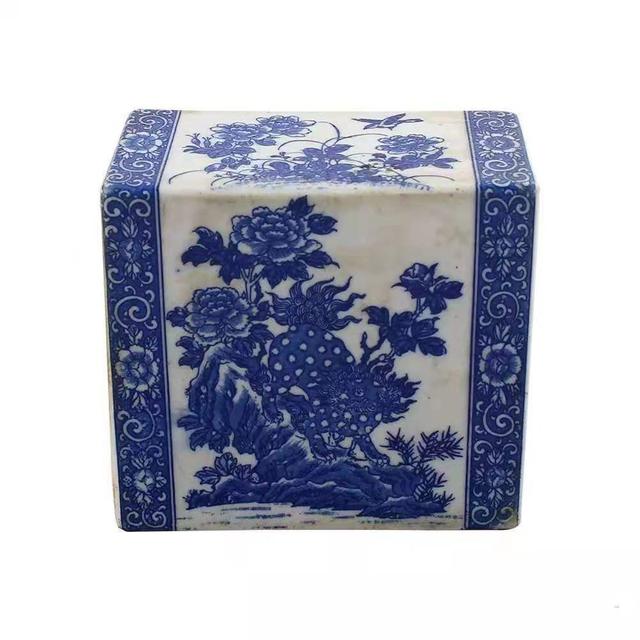
麒麟,是指中国传统瑞兽。古人认为,麒麟出没处,必有祥瑞。有时用来比喻才能杰出、德才兼备的人。 《礼记·礼运第九》:“麟、凤、龟、龙,谓之四灵”,可见麒麟地位起码与龙同等,并不低于龙。
但麒麟又是应龙的孙辈,《淮南子·地形训》:“毛犊生应龙,应龙生建马,建马生麒麟,麒麟生庶兽,凡毛者,生于庶兽”,也是五虫中的毛虫之长。
麒麟也有中土之兽的说法但与被《淮南子》《灵宪》等诸多古籍认为居中主土的黄龙相比,麒麟只有《易冒》一书将其与青龙等四灵相提并论。
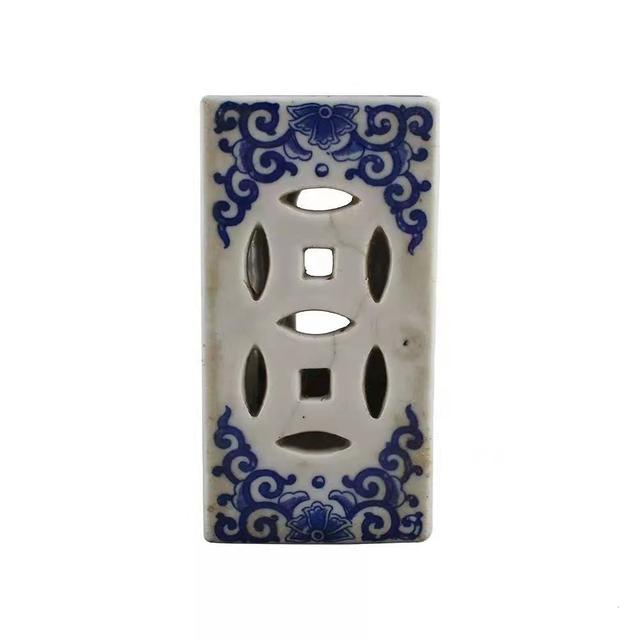
镂空双钱图案:【双钱眼纹】瓷器纹饰。流行于清代。常见官民窑生产的瓷墩上。双钱相交,钱眼镂空。“钱眼”寓“眼前”,双钱,又称“双泉”,寓“双全”,有“富贵双全”、“眼前即富”的意思。也有绘画的双钱纹。

主题画面为麒麟送富贵图,麒麟深厚牡丹绽放,随着麒麟下山,有着送的寓意,整体画工精美,十分耐赏!可以看到突出位置在自然光线下出现了漫反射的情况,没有任何的贼光,青花浓淡有致,吃进胎骨,而不是那种浮在表面的青花,这件青花盆十分开门,且品相完美,值得收藏传世。

这件脉枕,长14.2厘米,宽12.9厘米,高6.7厘米,属于脉枕规格,侧面图案为一只小鸟被牡丹花王所吸引,瓷枕收边画,牡丹如意纹,意为如意富贵,可见青花画面颜色深浅不一,青花晕散明显,画面极其生动自然,不管从任何角度欣赏都是古韵十足,青花瓷是能最好表现泼墨山水画的瓷器,这是其它瓷器所做不到的,所以青花瓷最具中国风,最能体现中国山水画艺术的最好载体,china这个单词大家都知道是中国的意思,可是最早这个单词的意思就是瓷器,因为当时中国被称之为瓷器之国,可见我国瓷器的影响之大,已经成为对外的一张艺术名片了,而当时出口瓷最多的就是青花瓷,这件青花瓷开门见老,画工精美,寓意吉祥,综上所述是一件十分难得的馆藏级藏品,可谓是千金易得,一宝难求。
早在汉代,中国工匠用铜做着色剂,便烧制出铅绿釉陶制品。宋时瓷器上的绿釉已较普遍。明、清时期的绿釉瓷器发色漂亮,其中郎窑绿、苹果绿极具代表性。
绿釉刻花筷笼
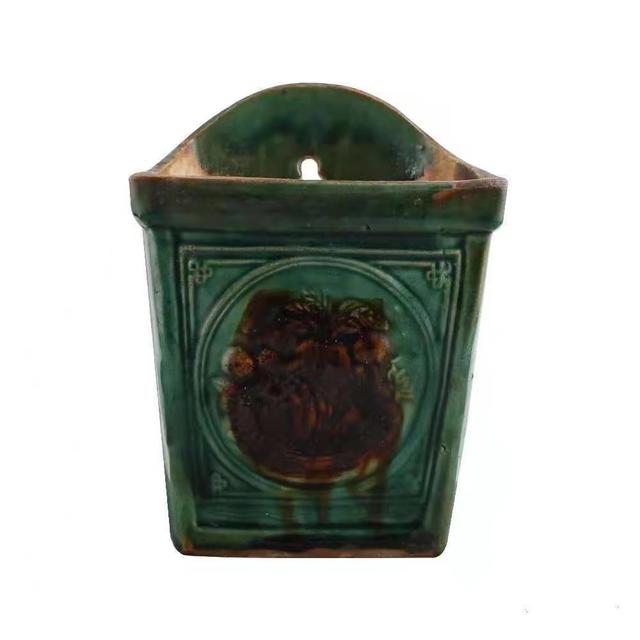
陶瓷刻划花装饰是指在已干或半干的陶瓷坯体表面上,用竹制或铁制工具来刻划出各种深浅、面积不同的纹饰。在陶瓷胎体表面的刻划装饰中,包含了剔花、刻花、划花、镂空、篦划纹、篦点纹等各种不同的工艺技法。
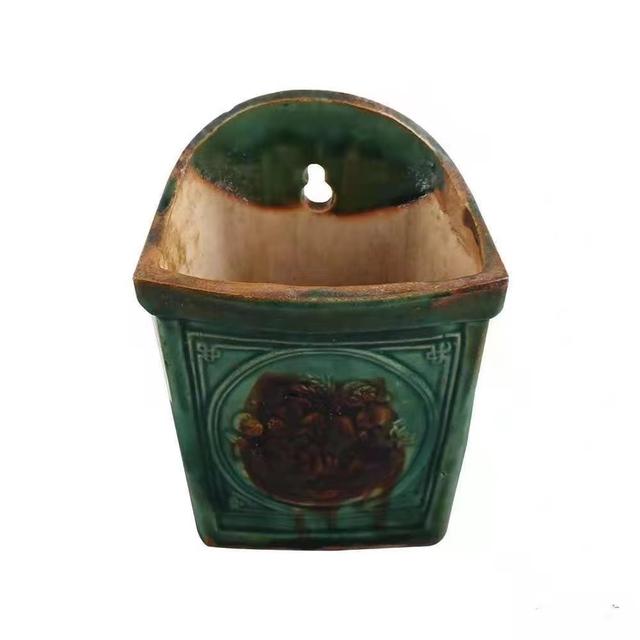
可见绿釉之上带着酱釉,绿釉是一种以铜为着色剂,以铅化合物为助溶剂的石灰釉,铜在还原气氛中呈红色,在氧化气氛中呈绿色。传统的铜绿釉——绿釉和绿彩都是以铜作着色剂。而釉里红也是用的铜作色剂,不同的烧制的方式,有着不同的表现。
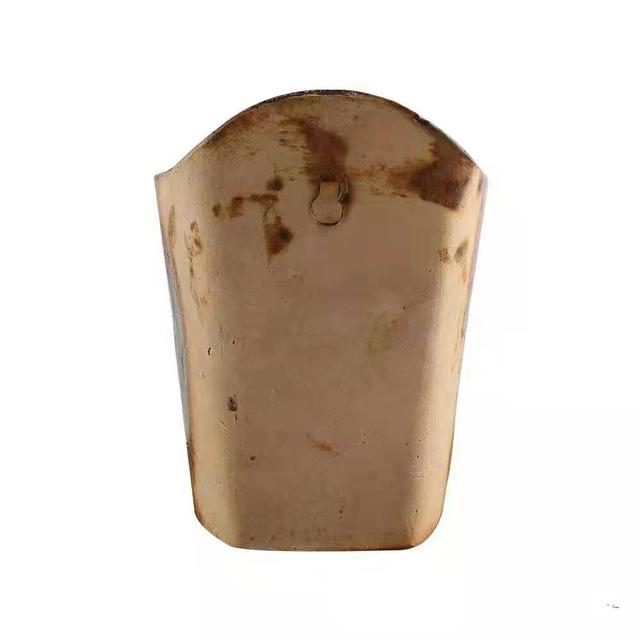
背面可见胎骨,还是十分原石的,有如唐三彩的胎骨,质地没有后期的坚硬紧密,这是由于当时没有瓷石原料的缘故,二十泥胎烧制,故而更像是陶器上有了色彩,是陶器到瓷器的过渡产品。

这件筷笼,高18厘米,口宽11.9厘米,底部可见明显的氧化铁锈斑,是胎骨中含有较高的铁元素烧结后氧化而至,胎底修胎痕迹明显,整件瓷器十分开门,细看此筷笼,毫无磕缺,损毁,品相完美,流传至今十分难得,是一件具有极高收藏价值的精品绿釉筷笼,可传世,收藏。
佛教的创立者释迦牟尼(佛陀),是古代中印度迦毗罗卫国的释迦族人,他存在于西元前第一个千年的中期。此时商品贸易的繁荣促使了刹帝利阶层的崛起,婆罗门教特权地位引起了不满,思想界活跃着包括佛教在内的沙门思潮。
释迦牟尼的生平,没有引起早期三藏编者的重视,他们只是尽量详细记录导师的言词;更详尽的叙述和更传奇的故事在后来才被精心编造出来。关于佛陀的形象,相对可靠的是一个基本轮廓。他成长于富裕的环境,娶妻生子后,大概29岁时出家;所学的禅定和苦行都无法解决问题;约35岁时得到佛陀的自觉。余生的岁月,他的足迹遍布恒河流域,向各阶层说法教化。他对外道思想所做的扬弃,纠正了时代文明的某些偏失,也维护了刹帝利的阶级利益,使他被尊称为释迦族的圣人。
释迦摩尼铜坐像
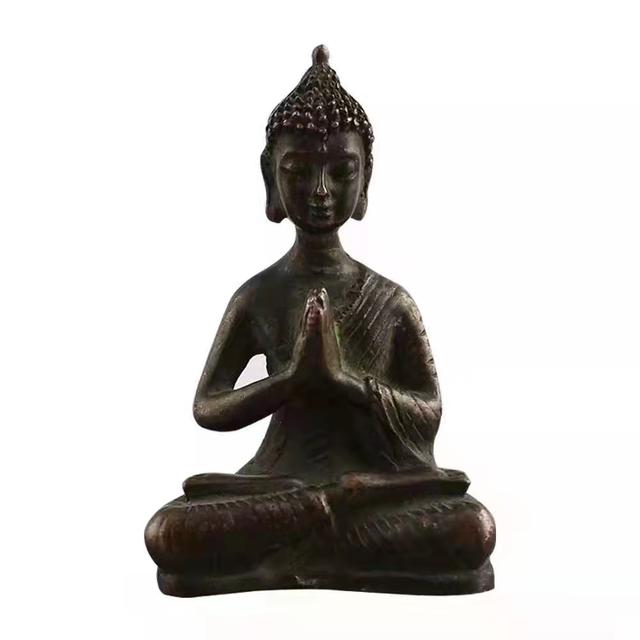
这件释迦摩尼坐像,而且在手脚以及坐莲都十分规整,双手合十,结合十印,十分精美,手脚形成包浆,看起来更具立体感,再看表面其青铜色自然,绿绣放大后具有颗粒感,十分开门见老,额头饱满,佛像最看开脸和手,其脸部面容慈禧,这就是佛像的开脸,开脸好的佛像开脸肯定是十分生动的,嘴角的酒窝,脸部的肌肉表现的十分自然,这件释迦摩尼开脸可以说在佛像中属于上上之品,十分难得,手部也十分精美,整体传神,给人心静之感。
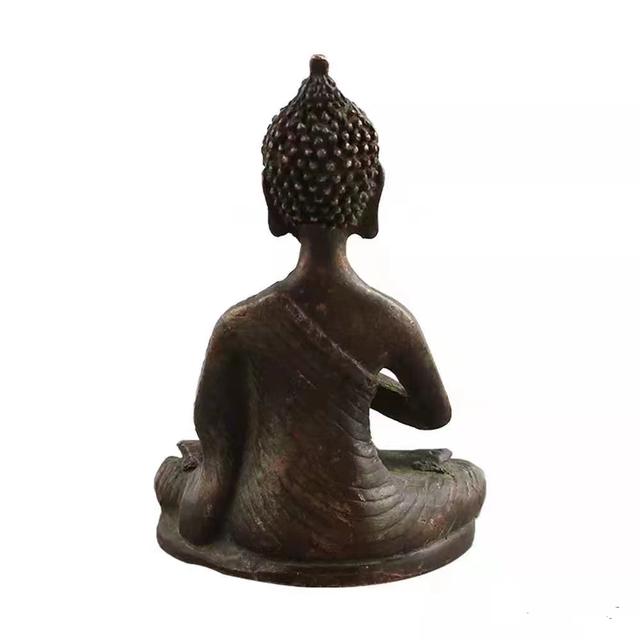
只有好的作品雕工是全方位乃至任何一个细节都是非常到位的,可以看到发髻有如松果一般,立体感很强,非常清晰错落有致,显得十分自然,后背衣服的纹饰也十分清晰,整体做到了曹衣出水的效果,令人十分惊叹。

身着袒肩式佛衣,结跏肤坐,双膝弯曲,双手合十,身姿端正。纹饰优美生动,该铜佛像五官和手脚,衣纹等处精雕细刻,技艺精湛,表情庄重,不失柔和,使人百看不厌。
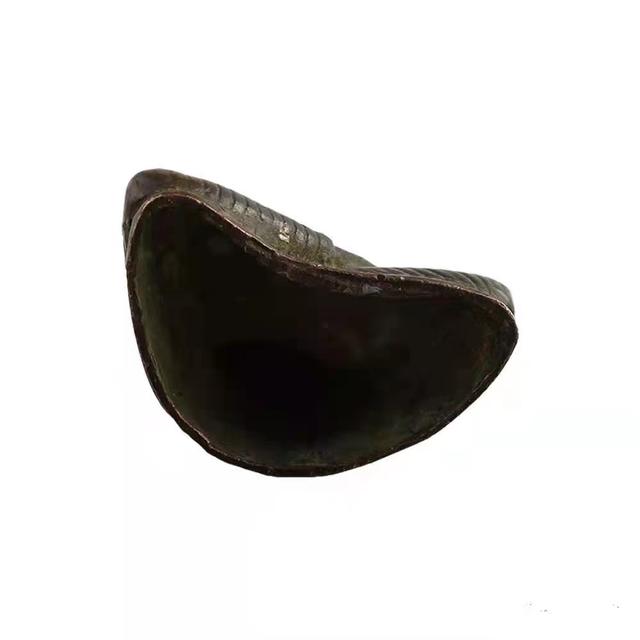
从内部的氧化绿锈来看,年代久远,锈迹放大后可见颗粒感,与铜佛融为一体,为贴骨绿锈,表现开门见老。
释迦佛的作用 总的来说,释迦牟尼佛是佛教教主,是佛教**们的一种信仰,是人们祈求内心平静无杂念,通过“和颜”、“言”、“心”、“眼”、“身”、“座”“、察”去积累圆满了无上的福德和智慧,成就无量功德。因而释迦牟尼佛也被称为“佛宝”,是众生的最上福田。
此佛像衣服褶皱自然做到了‘曹衣出水’的效果,且品相完美,无磕无残,具有极高的收藏价值。
英文翻译:Blue and white porcelain, also known as blue and white porcelain on white floor, often referred to as blue and white for short, is one of the mainstream varieties of Chinese porcelain. It is a type of underglaze colored porcelain. Blue and white porcelain is made of cobalt ore containing cobalt oxide, painted on the ceramic body, and then covered with a layer of transparent glaze, after a high temperature reduction flame firing. The cobalt material is blue after firing, which has the characteristics of strong coloring force, bright hair color, high firing rate and stable color. The original blue and white porcelain appeared in the Tang and Song Dynasties, while the mature blue and white porcelain appeared in the Hutian kiln of Jingdezhen in the Yuan Dynasty. In the Ming Dynasty, blue and white became the mainstream of porcelain. It reached its peak during the Kangxi period of the Qing Dynasty. In the Ming and Qing dynasties, also created and burned blue and white colorful, peacock green glaze blue and white, bean green glaze blue and white, blue and white red color, yellow blue and white, brother blue and white glaze and other derivative varieties.
Porcelain pillow is a kind of pillow, which is a more popular form of ancient Chinese porcelain. The pillow is painted with colorful glaze or inscribed with poems. First burned in the Sui Dynasty, popular in the Tang Dynasty after. It is said that it was used as a funerary organ at the beginning, and then as bedding and pulse diagnosis.
Blue and white kylin to rich porcelain pillow
Kylin is a traditional Chinese auspicious animal. The ancients believed that wherever the kylin appeared, there would be auspicious signs. Sometimes it is used to describe a person of outstanding ability and integrity. The Ninth book of Rites: "Lin, feng, turtle and dragon are called the four spirits." It can be seen that the unicorn status is at least equal to the dragon, and not lower than the dragon.
However, qilin is also the grandson of Yinglong. In Huainanzi · Terrain Training, "MAO Du gave birth to Yinglong, Ying Dragon gave birth to Jianma, Jianma gave birth to Qilin, Qilin gave birth to common animals, and all hairy people were born to common animals." It is also the longest caterpillar among the five worms.
Qilin is also considered to be the beast of the Middle Earth, but compared with huanglong, which is considered to be the center of the earth in many ancient books such as Huainanzi and Lingxian, only the book Yi MAO compares it with the four spirits such as Qinglong.
Hollow out double money pattern: [double money eye pattern] porcelain decoration. Popular in qing Dynasty. Common official and civilian kiln porcelain pier production. Double money intersection, money eye hollow. "The eye of money" combines "the present", double money, also known as "double spring", combines "double integrity", has the meaning of "wealth and prosperity", "the present is rich". There is also the double money pattern of painting.
The theme screen for kylin to send rich picture, kylin deep peony blossom, with the kylin down the mountain, has the meaning of sending, the overall painting is exquisite, very resistant to appreciate! Can see the prominent position in the natural light under the diffuse reflection, without any light, blue and white shade, eat into the fetus, rather than the kind of floating in the surface of the blue and white, this blue and white basin is very open, and the appearance is perfect, worthy of collection handed down.
This MaiZhen, 14.2 cm long, 12.9 cm wide, 6.7 cm high, belongs to the MaiZhen specifications, the profile design is a little bird was attracted by the peony kao, porcelain pillow on painting, peony best lines, meaning the best riches and honour, visible blue screen color shades, blue and white halo powder, picture extremely vivid and natural, no matter from any Angle to appreciate is a sensibility, Blue and white porcelain is the best performance splash-ink landscape painting of China, it is the other porcelain can't do, so most Chinese wind of blue and white porcelain, most can reflect the best carrier of Chinese landscape painting art, China this word is the meaning of the Chinese is known to all, but the meaning of this word is the earliest porcelain, because the country is referred to as Chinese porcelain, It can be seen that the influence of China's porcelain has become an art card to the outside world. At that time, the most exported porcelain is blue and white porcelain. This blue and white porcelain opens the door to see the old, the painting is exquisite, and the meaning is auspicious.
As early as the Han Dynasty, Chinese craft**en fired lead-green glazed ceramics using copper as a colorant. In the Song Dynasty, green glazes were more common on porcelain. Green glazed porcelain of the Ming and Qing dynasties has beautiful hair color, among which lang kiln green and apple green are very representative.
Both green chopstick case with carved glaze
Ceramic carving decoration refers to the use of bamboo or iron tools on the surface of dried or semi-dried ceramic body to carve out various shades and different areas of grain decoration. In the carving decoration of ceramic body surface, it includes various techniques such as picking, carving, carving, carving, hollowing, grate drawing, grate point and so on.
It can be seen that there is paste glaze over the green glaze. The green glaze is a lime glaze with copper as colorant and lead compound as cosolvent. Copper is red in reducing atmosphere and green in oxidizing atmosphere. Traditional patina glazes - green glazes and green colors are copper as a colorant. And youligong is also used copper coloring agent, different firing methods, have different performance.
The fetal bone can be seen on the back, which is still very raw stone, just like the fetal bone of the Tri-colored Glazed pottery of the Tang Dynasty. The texture is not as hard and tight as that of the later period. This is because there was no porcelain stone material at that time.
This chopsticks box, 18 cm high, 11.9 cm wide, clearly visible at the bottom of the iron oxide rust stain, is fetal bone containing high iron oxide after sintering, and the bottom of the tire repair tire marks, the pieces of China is very open, scrutinize the chopsticks box, no ke is missing, damaged, quality perfect, to this very rare, is a fine green glaze chopsticks box, with very high value of collection Can be handed down, collection.
The founder of Buddhi**, Shakyamuni (Buddha), was a member of the Shakya tribe of Kapilavastu in ancient India. He existed in the middle of the first millennium BC. At this time, the prosperity of commodity trade promoted the rise of the Kshatriya class, the privileged position of Brahmins caused dissatisfaction, and the ideological circle of Samana, including Buddhi**, was active.
The life of Sakyamuni did not attract the attention of the early editors of the Tripitaka, who only tried to record the words of the master in detail; More elaborate narratives and more legendary stories were crafted later. One of the most reliable images of the Buddha is a basic outline. He grew up in a wealthy environment, married and had children, and became a monk when he was about 29. Meditation and ascetici** are not the answer; When I was about 35 years old, I got the consciousness of Buddha. For the rest of his life he traveled all over the Valley of the Ganges, preaching enlightenment to all classes. The sublation and discarding of the external daoi**, he corrected some errors of the civilization of The Times, and also maintained the class interests of kshatriya, so that he was honored as the sage of the Shakya tribe.
A bronze sitting image of Sakyamuni
The Buddha had cave, and in the hands and feet and lotus are neat, hands folded, combined with ten printing, very elegant, hands and feet wrapped slurry, look more stereo feeling, to look on the surface of the bronze color natural, patina enlarged have grain feeling, very open to me, his brow, Buddha the most see carve one's face and hands, his face countenance empress dowager cixi, this is the figure of Buddha of carve one's face, The dimples on the corners of the mouth and the muscles on the face are very natural. This Sakyamani open face can be said to be the best product in the Buddha statue. It is very rare and the hands are also very delicate.
Only good works carving is all-round and even any detail is very in place, you can see the bun is like a pinecone general, three-dimensional sense is very strong, very clear patchwork, very natural, back clothes decoration is very clear, the overall effect of cao Yi water, it is very amazing.
Dressed in a bare-shouldered buddhist garment, he is seated in the buddhist chair with his knees bent and hands clasped in a regular posture. Beautiful and vivid decoration, the bronze Buddha facial features and hands and feet, clothing lines and other places carefully carved, exquisite skills, solemn expression, do not lose soft, so that people never tired of watching.
From the inside of the oxidation of green rust, age, rust magnification can be seen particle sense, and copper Buddha integrated, for sticking bone green rust, performance open the door to see the old.
The role of Sakyamuni Buddha In general, Sakyamuni Buddha is the head of Buddhi** and a kind of faith of Buddhists, who pray for inner peace and free from miscellaneous thoughts, accumulate the supreme virtue and wisdom through "heyan", "speech", "mind", "eye", "body", "seat" and "observation", and achieve boundless merit and virtue. Thus Sakyamuni Buddha is also known as "Buddha treasure", is the highest fukuda of living beings.
This Buddha Buddha clothes fold naturally achieved the effect of "Cao Yi water", and the appearance is perfect, no knock no residual, has a high collection value.
标签: 孔雀绿翡翠原石



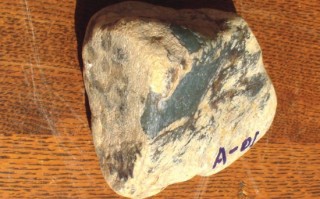
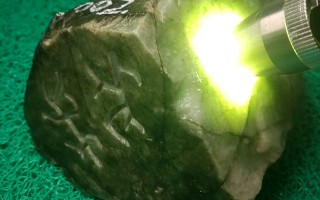
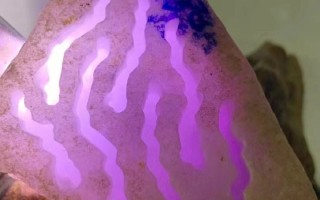
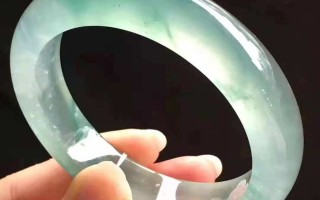

评论列表
绿色翡翠饰品,能使人显得含蓄端庄,充满活力
翡翠的寓意代表着丰收、金钱、满地有财、处处生财
本身也代表着优雅、神秘、温和和端庄等